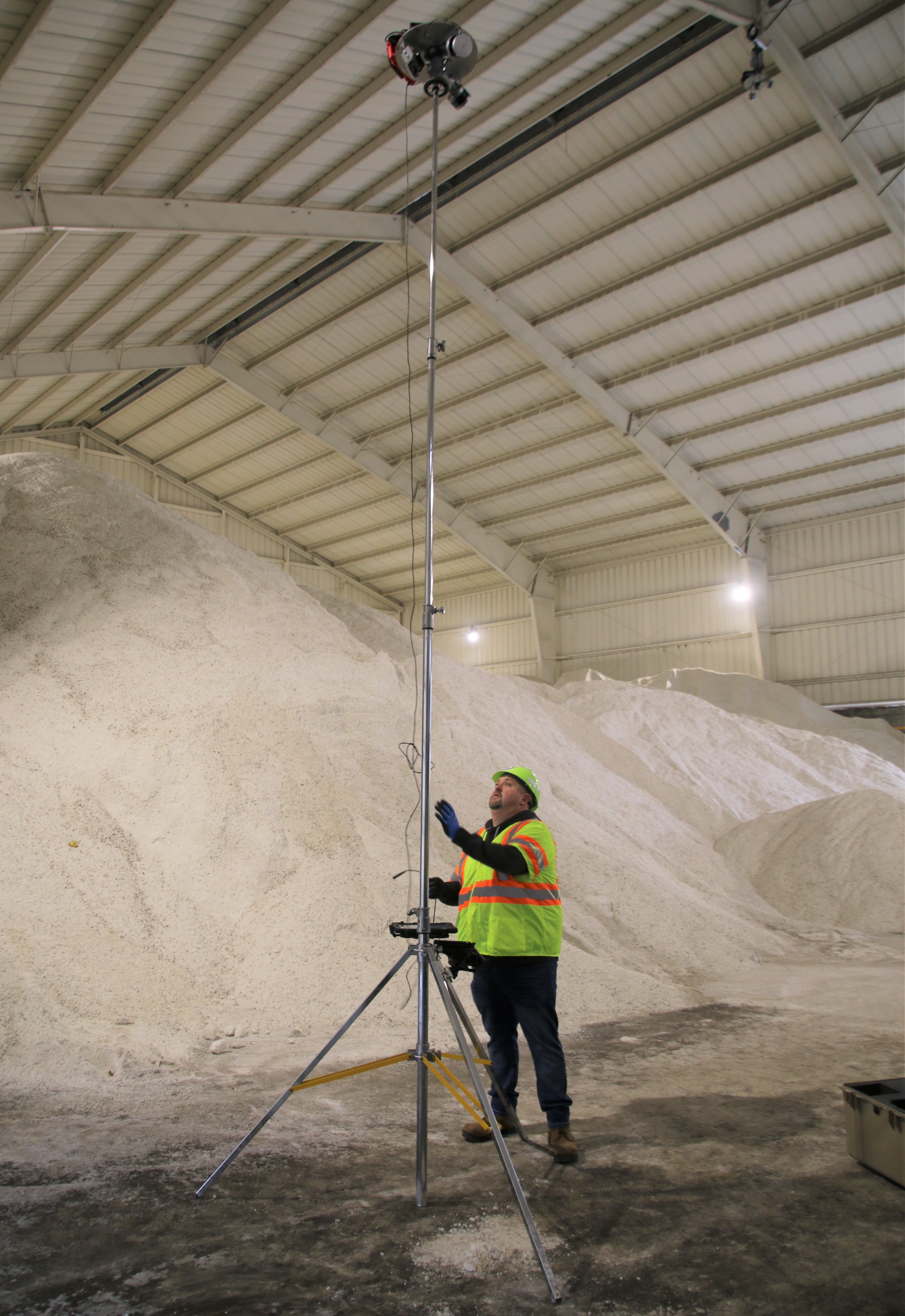December 2022
INDOT has teamed with Purdue University and the Joint Transportation Research Program (JTRP) this winter to test a Salt Monitoring and Reporting Technology (SMART) system that more accurately gauges how much salt we have stored in our salt buildings. The technology is so reliable that INDOT has adjusted its Work Management System (WMS) salt-volume figures for almost every facility.
From November to February, INDOT Quality Assurance Inspectors Josh Stutesman and Wayne Pavey crisscrossed the state, using a portable tech platform to measure salt stockpiles in all 120 INDOT salt buildings.
Purdue University Civil Engineering Professors Ayman Habib and Darcy Bullock created the system, which the Purdue Research Foundation Office of Technology Commercialization submitted for a U.S. patent.
For the project, Purdue custom built a LiDAR/camera assembly and created the method of calculation and automation. The tripod-mounted setup consists of a LiDAR and RGB imaging system. Two LiDAR scanners send millions of beams of light to create a digital reading of the interior of the salt facility, including a 3D model of the salt pile. A GoPro camera helps validate the findings and provides color data for the derived 3D model.
Stutesman and Pavey, who were trained by the Purdue team, worked individually at each INDOT salt building. After setting up the equipment near the left side of the building, they cranked the assembly pole to 20 feet to see over the salt piles and started the scans. They spun the pole at 30-degree increments to collect all the information — via 13 images and 26 scans — from that position. After the device was rotated 360 degrees, they set up the system near the right side of the interior and repeated the process.
Within 24 hours after receiving the information from Stutesman and Pavey via Purdue’s SharePoint site, the Purdue team processed the data for a 3D model.
After each salt building visit, Statewide Operations Assistant Director Zach DeLoach compared the SMART figures to WMS statistics, which historically have been reported through visual estimates by district personnel.
“As a former foreman, I know how difficult it is to figure out how much salt you have,” said Stutesman. “You can’t see the valleys between the piles or the back side of the pile.”
Said DeLoach: “Some salt barns can hold 6,400 tons of salt, so being off is a big deal because we need to know the true inventory during winter storms. We trust the SMART figures, so we changed WMS to reflect the SMART statistics obtained from Josh and Wayne.”
DeLoach has confidence in the SMART system because Purdue and JTRP spent 2021 and 2022 in salt buildings testing their invention with hundreds of scans. In the process, they proved that SMART scans are accurate to within 1%.
Stutesman and Pavey will scan INDOT’s salt buildings again this spring so that the agency gets a better idea of salt quantities to purchase for the 2023-24 winter season.



